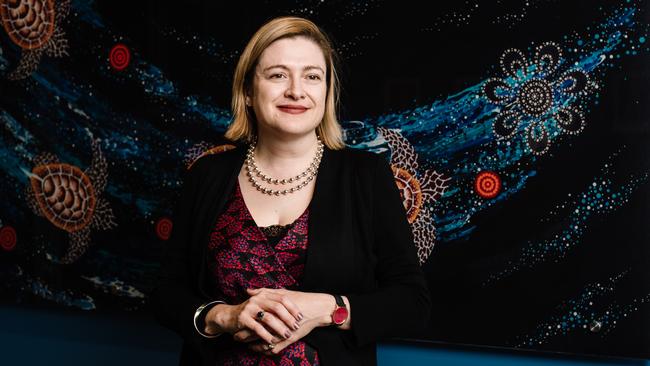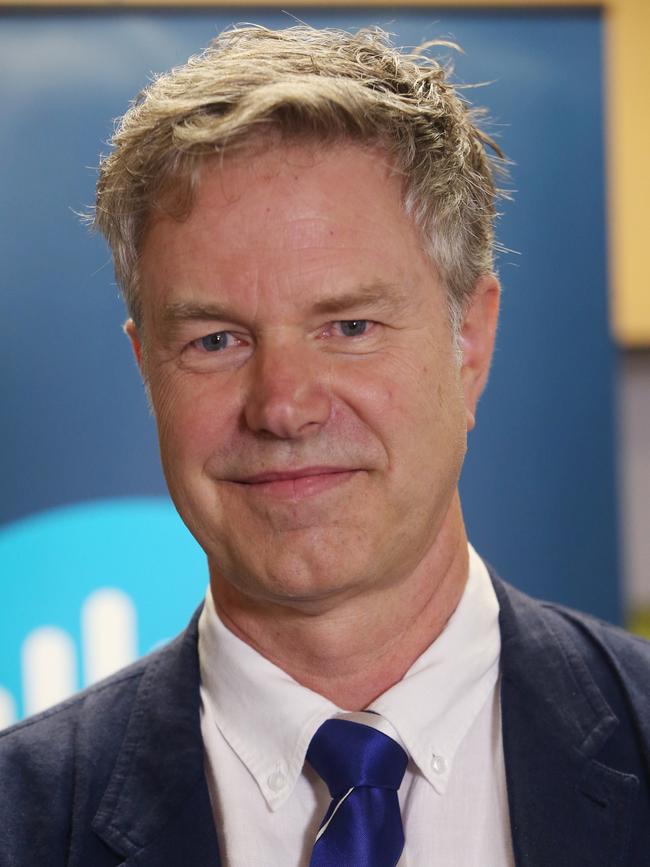Army of scientists take on Covid-19
Australia’s Chief Defence Scientist Tanya Monro has a key role in the battle against future threats.

It is a mission that is more critical than ever.
The unifying goal that spans all the research and technology endeavours overseen by Australia’s Chief Defence Scientist, Tanya Monro, is the desire to overcome hostile environments.
As COVID-19 spreads across the globe, and the economic and social challenges stemming from that grow, the challenge is clear.
“What binds everything, now and in the future, is we increasingly need to be able to prevail in a competitive environment,” she says. “(Our programs) are all about giving Australia — and our allies — that ability to prevail.”
Monro has entered her second year as the Department of Defence’s Chief Scientist and her leadership is making its mark.
Defence will soon launch its More, Together: Defence Science and Technology Strategy to guide the priorities and vision of the 2200 scientists and engineers at Australia’s second largest national research institute.
It builds on the 2016 defence white paper, and aims to further open up the sector to outside innovation and ideas to solve their key challenges.
These are the researchers that brought to the world the Black Box recorder, the 37,000sq km-range Jindalee Operational Radar Network to monitor air and sea movements, and the world-first Starlight system that allows secure computers to crack insecure networks without being compromised. Now they are working on fresh and emerging threats, including COVID-19 research, cybersecurity and disruptive weapon capabilities.
At the time of interview late last month, government officials were outlining new social containment strategies daily in a bid to reduce the spread of COVID-19. Now the focus has moved to maintenance.
Monro says the Defence scientific capability is supporting the whole-of-government response, while delving into specific research to increase understanding and strategies against the virus strain.
“We’re looking at the survivability of COVID on surfaces so that we can have better evidence-informed disinfection,” she says.
“That’s something we’re doing with colleagues across the Five Eyes countries. We’ve got really rapid ways of integrating what the latest knowledge is.”
She says the organisation is also working on the modelling and planning for the spread, and logistics and research, as well as a specific trial of chloroquine.
Agency researchers are also collaborating with the CSIRO at their Australian Centre for Disease Preparedness — formerly the Australian Animal Health Laboratory — to increase the national capacity.
That laboratory has already made great strides, including testing a vaccine candidate, replicating the RNA virus, identifying variants, investigating its impact on the respiratory system and improving surgical masks.
CSIRO’s Rob Grenfell says since the SARS epidemic of the 2000s they have new techniques to understand the virus at a molecular level and its biological function. Vaccine testing is now under way.

“We have cultivated the virus, growing it to levels that allow us to understand its genomic sequence and its characteristics,” Grenfell says. “This has allowed us to start testing it in the biological models we’ve previously used for the SARS virus and we then hope to test vaccines and therapeutics.”
Monro says the COVID-19 rapid response, and the shared knowledge and partnerships under way from the pandemic’s initial phase, highlighted the broad capacity of Defence.
“Australia is certainly playing an important role (internationally),” she says.
“What it really shows you is how powerful Defence is. Whatever crisis Australia might face, it shows how powerful those deep, trusted relationships are, with those countries (Five Eyes), and how we can really call on them in moments of crisis.
“This is something facing all of our nations and yet, spending time trying to help each other is still a priority.”
Defence Minister Linda Reynolds last week announced Professor Monro would lead a Rapid Response Group to increase the national stock of ventilators to deal with COVID-19 outbreaks.
“Defence is able to co-ordinate the activities between public and private stakeholders, by harnessing Defence Science and Technology’s capabilities and facilities, and using existing expertise in specialist research engineering and technology development,” she says.
The COVID-19 response highlights the goals of Defence’s renewed push to solve major global problems affecting Australia.
Under the soon-to-be-released strategy, Defence has showed its hand on its research priorities.
It wants to “leap ahead” with eight so-called STaR Shots (Science, Technology and Research), goals to concentrate the efforts of their organisation, and Australia’s wider research network. It is focused on “mission-directed research”: impact instead of activities.
Monro says the strategy, and the STaR Shots, will be opened up to innovations from across the research community, underpinned by Defence’s existing $730m Next Generation Technologies Fund and other funding partners.
“This is about saying to the nation, here is a set of priority problems we want to solve. We can do more together,” she says. “It’s Defence that is looking into the nature of conflict and the changing world we live in. Defence knows what nuts it needs to crack, so to speak.
“But what I want to do is open up the solution space. I want to invite in industry and academia to work with us to suggest some of the ways we can work together to solve those problems.
“What we need to do is create the space for disruption and say to the community, these are the problems we want to solve, what should we do? It’s about creating that space for the unexpected.”
-
‘Technological change will improve our resilience, support a new level of agility in command and control, and give us new options for effects’
— Tanya Monro, Austalia’s Chief Defence Scientist
-
The challenges are complex.
The strategy says the initial eight STaR Shots are aimed at “Defence’s ability to prevail in contested environments”.
“Aligning with capability needs across each of the warfighting domains, they will enable Defence to get to the fight, shape how the ADF operates and generate new military effects,” the strategy says.
“The STaR Shots are deliberately ambitious and reflect Defence’s enduring commitment to invest in science and technology.”
They include providing resilient global communications, position navigation and geospatial intelligence; information warfare capacity; command and control capability; assuring position, navigation and timing systems; disruptive weapons; operating in contaminated environments; next-generation digital and analytics systems; and autonomous undersea surveillance.
“The ADF’s ability to understand the operational environment, manoeuvre and project force will be transformed through advances in sensing, information fusion and dissemination, artificial intelligence and human-machine partnership”, the strategy says.
“Technological change will improve our resilience, support a new level of agility in command and control, and give us new options for effects, whether kinetic or in the information domain.”
Monro says the defining projects will act as a beacon to attract other researchers.
“Australia’s got a really good quantity of world class R&D but I’d proffer that it’s fairly bottom up,” she says.
“If you create a greater awareness of the possible problems your research can solve and you create the partnerships and the pathway to impact from that, that’s really powerful.
“People don’t do research for the sake of research, they want to see it used and applied. The overall ambition is to improve that alignment between what the nation does and what Australia needs from a defence and national security perspective.”
Personally, Monro has the runs on the board in terms of research and application.
The highly awarded first female Chief Defence Scientist’s background is in the physics field of photonics, with a focus on sensing, lasers and new classes of optical fibres.
She was the inaugural director for the ARC Centre of Excellence for Nanoscale Bio Photonics (CNBP) at the University of Adelaide, where she, along with Dayong Jin, developed so-called Super Dots technology for optical physics to detect early cancer cells before they grow.
Her most recent role before Defence was as deputy vice-chancellor, research and innovation and an ARC Georgina Sweet Laureate Fellow at the University of South Australia.
“I have to pinch myself,” she says. “We sit at the nexus of two worlds: the R&D world where you’re trying to create new solutions and knowledge, and the world that uses that knowledge.
“My scientists are going to create new solutions for the ADF, but what we’re doing is far bigger than anything else they could do and we want to harness that whole R&D environment so more people are doing things that could impact.”



